DIVE SITES OF THE GILIS
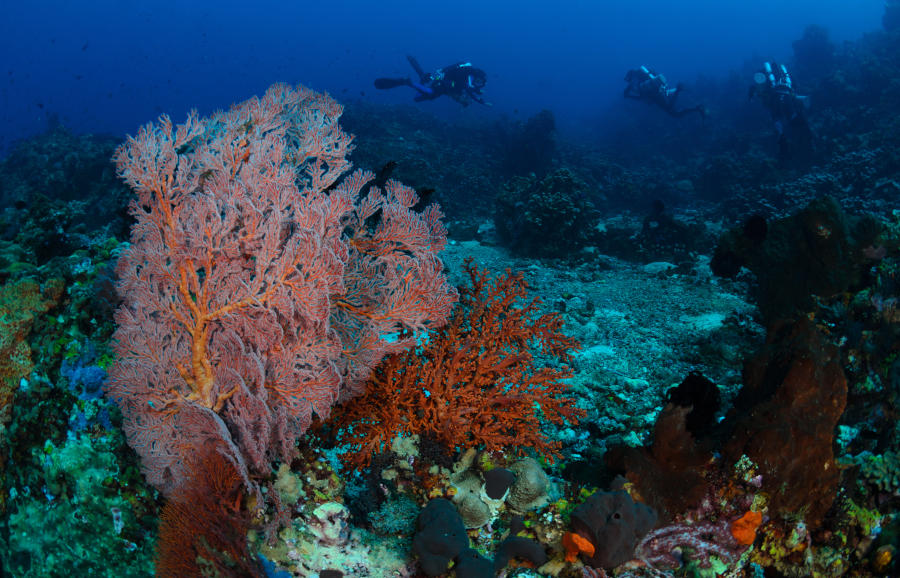
This amazing reef is located a little off of the north coast of Gili Meno. As on Deep Turbo and Takat Malang the reef consists of a series of seamounts rising up from about 35m. There are 8 major “takats” arranged roughly in a figure of eight and abundant with all sorts of coral variations. The average depth on this dive is around 25m which makes it perfect for nitrox divers. The coral variety is superb, with most types of stony coral well represented plus a good deal of soft corals. You have a good chance of finding the well camouflaged pygmy seahorse in some of the gorgonian fans. There are numerous schools of fish around the reef especially when the currents are strong. Spanish mackerels, green turtles as well as cuttle fish frequently hang out around the top of the pinnacle. On the sandy bottom marble rays, eagle rays and white tip reef sharks are spotted every now and then and it’s the home of the amazing Notodoris Minor Nudibranch or as we call it Banana Nudibranch. North east of Simon’s reef there is another beautiful ridge with massive barrel sponges and whip corals and a friendly potato grouper hides behind it on the sandy bottom.
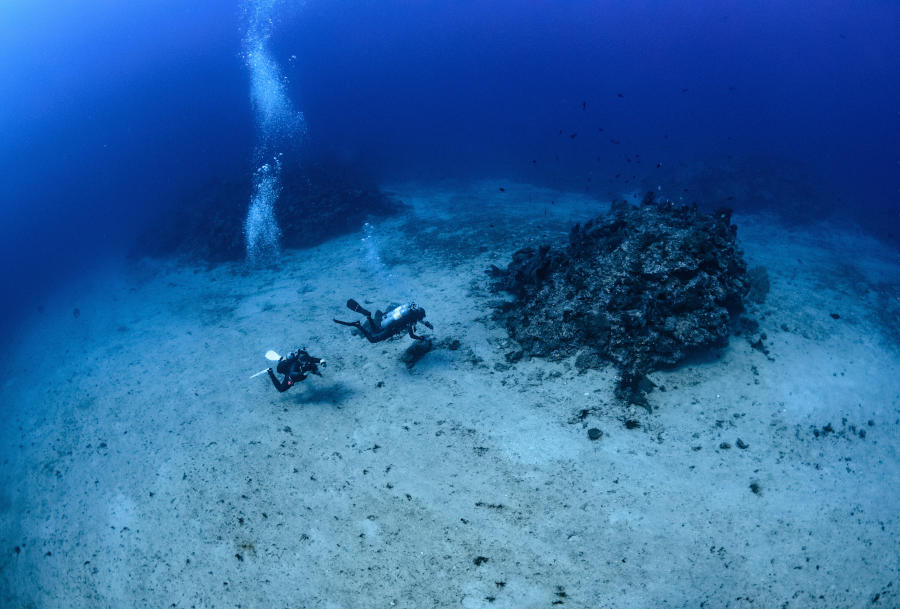
Thunder Reef was discovered in December 2014 by tech instructors Will Goodman and Storm Scolnick using a sonar. The reef orientation is north to south, 250m long and 18m wide. The top of the reef is at 24m with a maximum depth on the west side of around 40m. The reef is home to hundreds of fusiliers, bannerfish and red tooth triggerfish as well as eagle rays cruising around the top of the reef. On the sandy bottom next to the pinnacles we have regular sightings of jenkins whiprays, stingrays and banded seakraits. There is a large pinnacle to the east and 3 more smaller ones connected by a ridge to the west. The site has a very nice combination of hard and soft corals and some very impressive sea whips up to 5m high!! The pinnacles are covered with table corals where juvenile fish find a perfect hiding spot as well as barrel sponges and several different coral formations. Black snappers cruise around the pinnacles in vast numbers and many oriental sweetlips. A perfect dive site for nitrox, sidemount, twin tank or CCR divers or those looking to have their first experience below 30m.
Due to currents passing by from the North there are often trevallies and Spanish mackerels hunting and snappers cruising around the beautiful coral formations. On some occasions we have spotted sail fish and marlins in the blue after coming up from our dive.
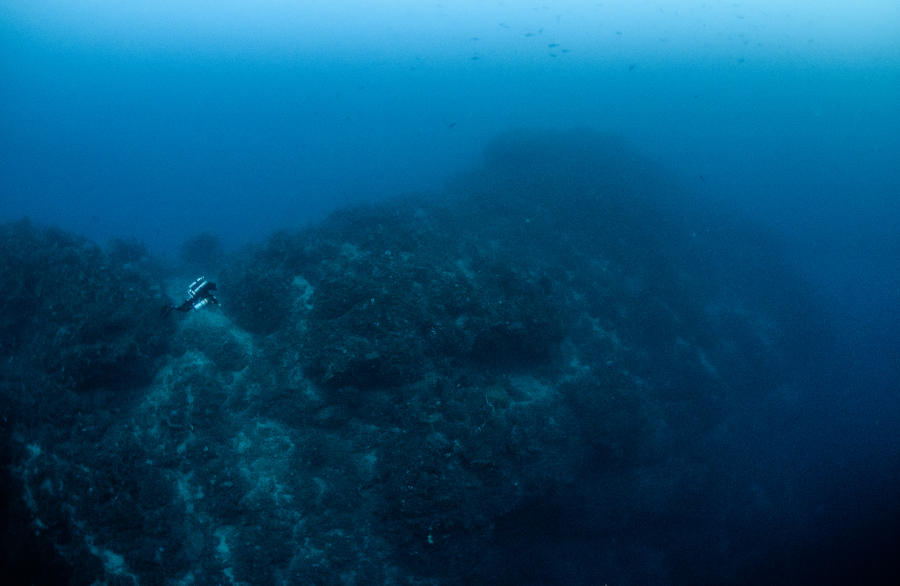
Pyramid Reef derives its name from it’s unusual topography. The drop in is at 30m on a narrow ridge that slopes down to the north. Eagle Rays are encountered on half of the dives done at Pyramids. The east side of the ridge drops into a beautiful wall covered in gorgonian fans and black coral. Deeper on the wall are ledges and huge boulders with strange life growing on the slope at 100m down to 130m creating shapes like pyramids. Further along on the wall at 55m is a pinnacle coming off the main reef. Once again pelagics and reef fish are in abundance. On the west side of the ridge is a 60 m flat sand bay full of swim throughs and canyons. Whitetips can be found in the sandy canyons and there is lots of smaller life on the wall and rocks. Pyramids is becoming more and more popular and is a very unique divesite in terms of topography and route taken underwater. It is also protected from currents making it an easy tech dive.
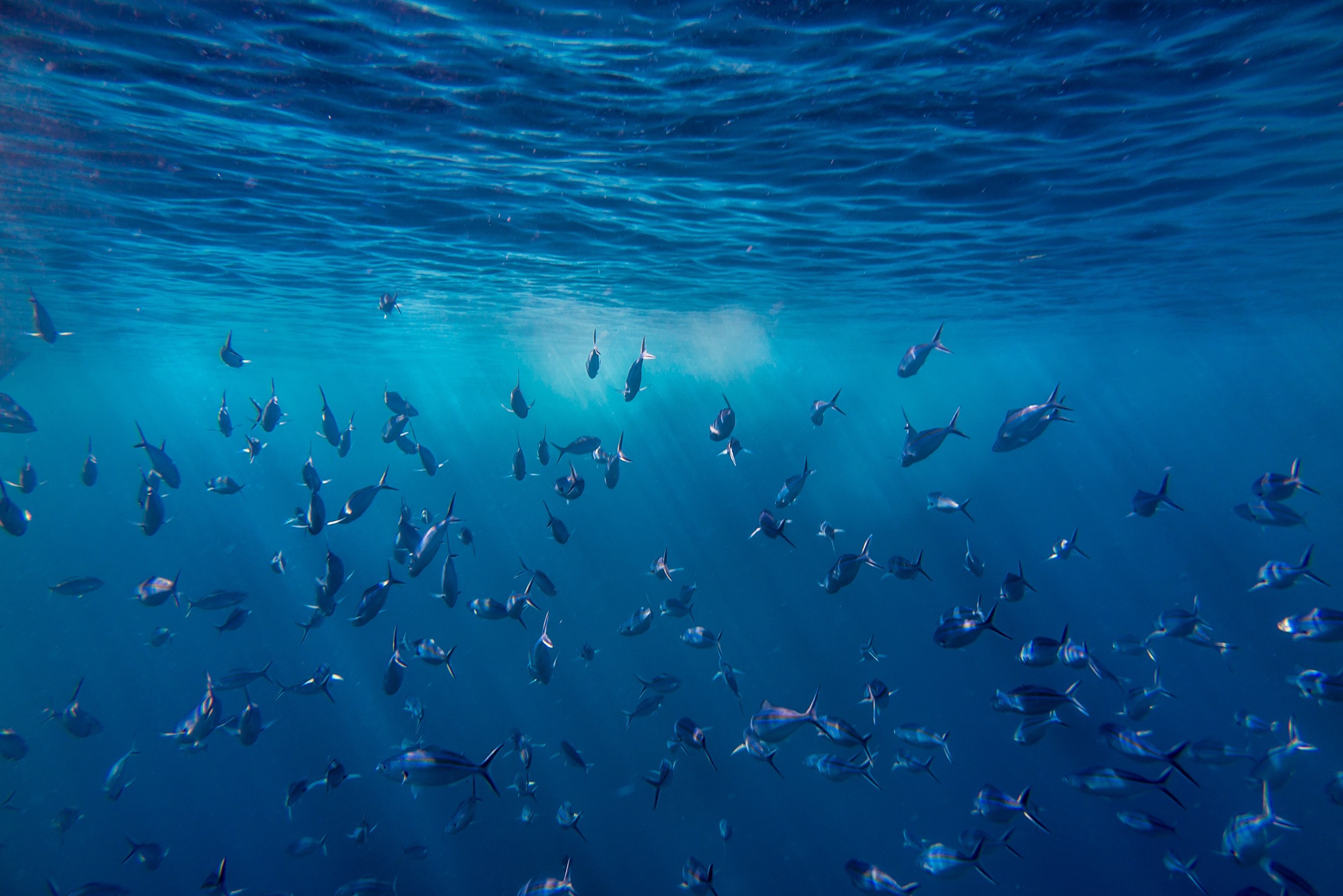
Halik reef caters to all levels of divers. Beautiful coral formations are found in the shallows and along the reef, coral bommies and gorgonian fans. This is a perfect drift dive with an amazing variety of fish life. You will find lionfish, moray eels, big groupers and clownfish. Around fullmoon massive bumphead parrotfish feed in schools on the hard corals, leaving a cloud of dust behind them. Green and hawksbill turtles are commonly found feeding on the reef.
The more experienced divers will be dropped on deep Halik, a series of coral ridges and canyons all the way down to almost 40m. The corals here are pristine and reef sharks, eagle rays and giant trevally are commonly seen. It’s perfect for Nitrox dives to stay on the deep ridges and enjoy the colourful sponges, coral formations and schooling fish minding their business. During several exploration dives we were able to find a seamound further out creating a beautiful reef structure in a half moon shape and long whip corals, huge barrel sponges are home to a variety of reef fish.

Turbo reef is a huge dive site and one of the pearls of the Gilis. The shallow area is of the north east coast of Gili Trawangan where water is being pushed up from the deep. Massive schools of redtooth triggerfish and fuseliers swim into the current to feed. In this area you can find scorpionfish waiting for an opportunity to feed, moray eels and lion fish hiding between the rocks as well as schooling yellow snappers hiding from the currents.
The more experienced diver will dive the deeper section which is situated a little off of the coast of Gili Trawangan and is a perfect opportunity for Nitrox Divers. The deep reef creates a canyon of hills and valleys where the most shallow part is about 16m dropping down to about 32m. Huge sea fans, overhangs and other interesting coral formations will fascinate you from start to finish. Sometimes you can spot a Leopard shark along with white tip and black tip reef sharks. The majority of the dive is around 20-30m which makes it excellent for Nitrox certified divers or shallow but longer decompression dives. Deep Turbo has always been a favourite where exploring the reef and its marine life gives you a truly fascinating dive.
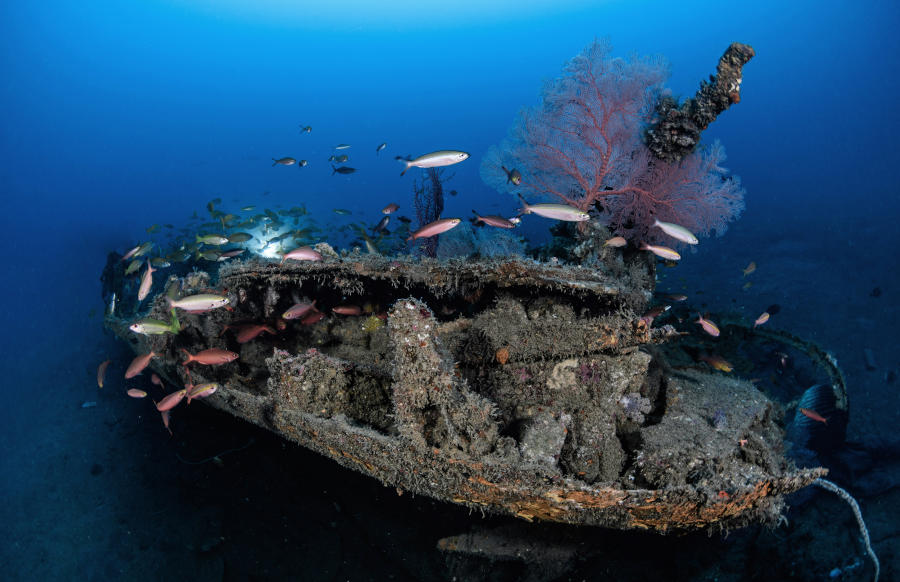
This dive is for the more experienced diver and is conducted as a decompression dive. Because of the depth we recommend to dive it on Enriched Air Nitrox to take full advantage of the experience. Talk to us and we will discuss if we are happy to take you there.
The Hayabusa Maru is a Japanese WW-II patrol boat lying in 45m water. She is fully intact sitting perfectly upright in the sand, even the original .50 calibre browning machine gun bullets are still there. It is located in a protected bay off of the coast of Lombok and has become an amazing arificial reef. The boat is about 25m long and is covered in corals and unspent ammunitions and surrounded by marine life. The wreck is the perfect shelter for schools of batfish, blue fin and sixbar trevally, snapper, grouper, fusilier nudibranch, flatworm, 6 species of shrimp , pipefish, frog fish. lionfish, scorpion fish, moray eels and juveniles of all descriptions. This is a perfect site for photographers and beginner tech divers as well as one of our most popular training sites.
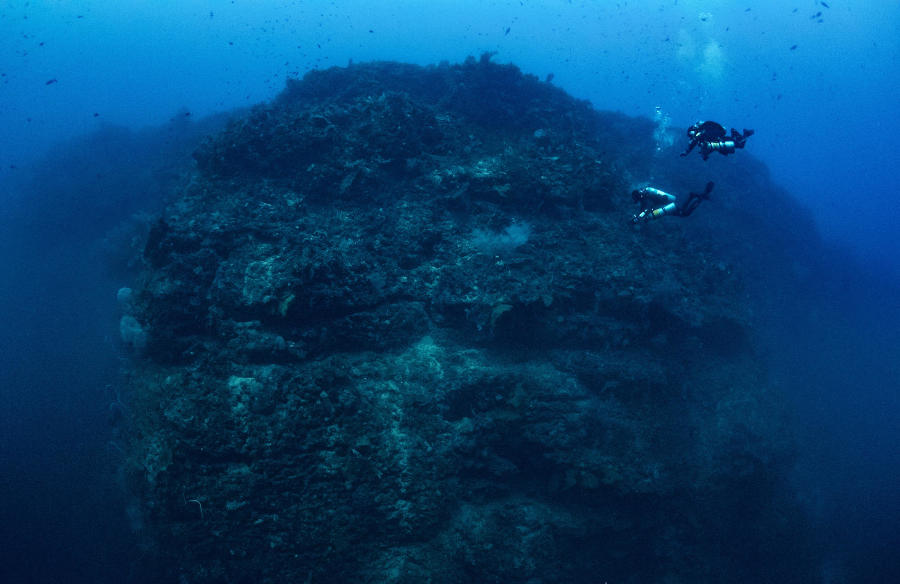
Tunuang actually comprises 3 sites. Rainbow reef, Cabbage patch and The Simons Drop. Because of the distance we are taking recreational divers for a two tank dive trip on the slope and our techdivers can experience the beauty of the deep wall whilst doing their deco on the reef all the way up to 5m. The top of the wall starts between 28m and 40m depending on which site you dive and drops to 200m as personally verified by Simon and Will during their record breaking training dives. When you do any tech diver course with us you will visit this location during your training and see the permanent descent line into the abyss. The wall is covered in a large variety of corals, colour and massive gorgonian fans and black coral. On the wall we have had encounters with thresher sharks, Molah molah and manta-and devil rays. Usually you will see schools of trevally, fusiliers and snapper. The slope leading to the wall is covered in cabbage and mushroom corals with a diversity of smaller reef fish.

Secret Reef is located between Gili Meno and Gili Air. Normally there is a North to South current which makes the reef ideal for drift diving. It is a dive site suitable for any level of diver however there is more to be seen between 10 and 35 metres which makes it perfect for Nitrox dives. There is an abundance of bright and colourful table corals, fans and barrel sponges which form a stunning slope from 10 to 35 metres. Beautiful ridges between 20 and 30 m create a beautiful contrast to the slope from the shallower area.
Due to the vast amount of corals present at Secret Reef, there is plenty of marine life to see. These include stingrays, triggerfish, clownfish, angelfish and pipefish, batfish, snappers and many other kinds of reef fish. The reef develops into a sloping bottom being home to whitetip reef sharks as well as an abundance of small critters.
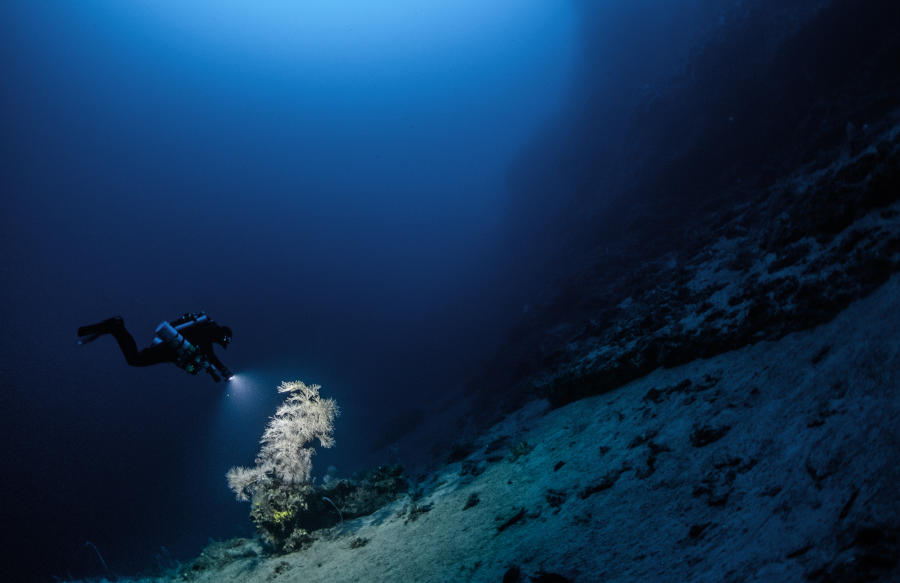
Don Yeng wall comprises 4 sites due to its size, Cave wall, Blue Bay, Batu Will and Don Yeng Wall. A free descent in the blue is needed to access the top of the wall at 42m which can generally be seen from about 20m depth. The top of the wall is covered in beautiful pristine foliose coral and blue tube sponges. The wall itself all the way down to around 90m where the coral becomes more sparse and the topography of the site becomes more interesting with lots of overhangs filled with shrimp and macro life. For deep air and trimix divers there is a small swim through at 56m, where large shoals of fusilier and surgeon fish move up and down the wall. In recent months we have seen a very large grouper of 2m length. Whitetip reef sharks can also be seen on the wall, cruising along at depths up to 60m. Going deeper there is less fish life but a steep slope exists from 90m to 130m with large coral bommies and huge coral fans, it is possible to see mola mola and thresher sharks at Don Yeng. From 130m the site drops into the unknown, no accurate records exist of the depths and topography past 150m. Coming back up the wall for decompression it is possible to follow a ridge up to 15m whilst observing smaller marine life.
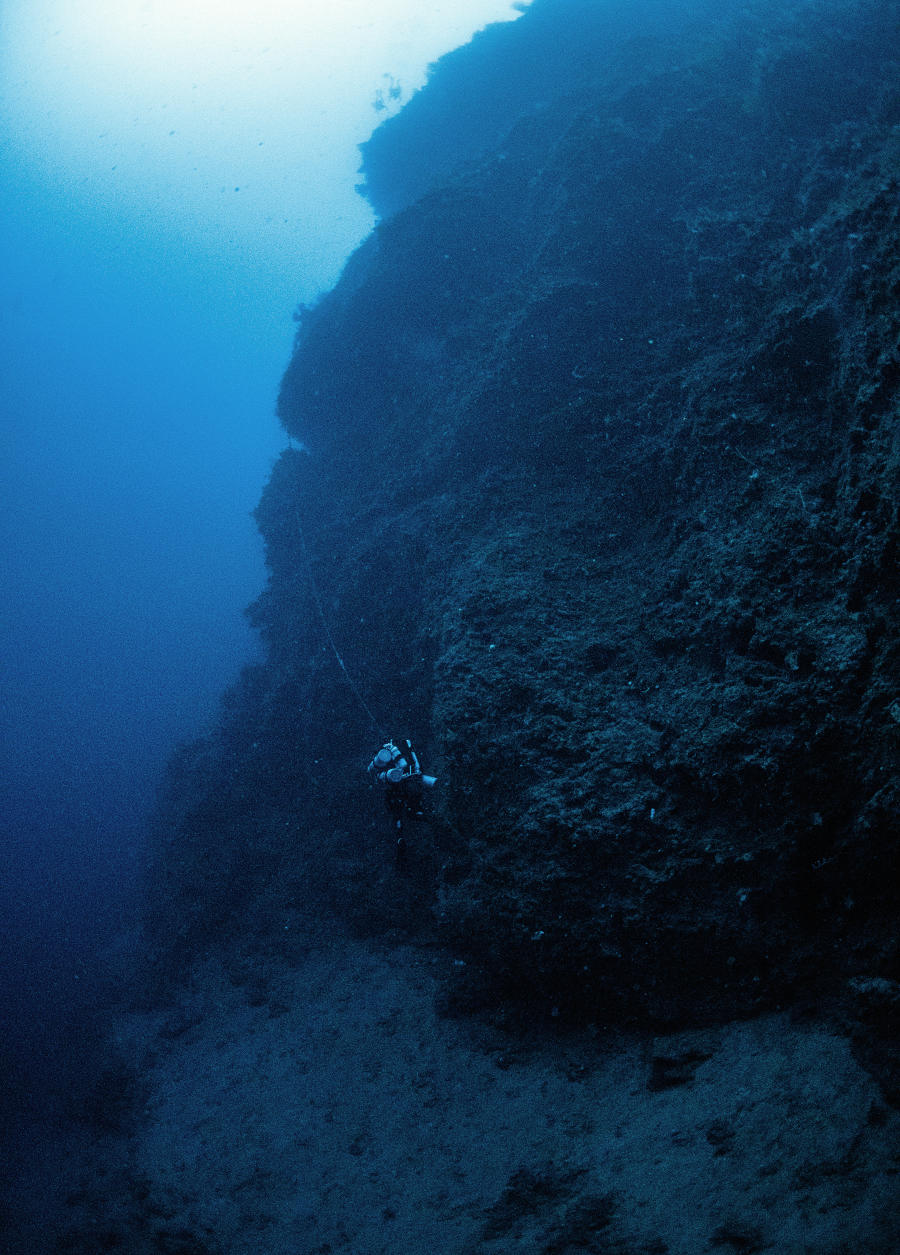
Located on the Northern tip of Lombok 42km from BM lies The Corner Shop. The Corner Shop was located and named in 2007 by Will on one of the regular 2 dive exploratory trips run by the Blue Marlin Dive Tech team. The site got its name because it had everything to offer and a 90 degree bend on the wall. The top of the reef is covered with hard corals and fans on a 42m shelf that has a vertical wall to 85m. Marine life is abundant with regular sightings of whitetip and grey reef sharks, eagle rays, fusiliers, snappers, trevallies, sweetlips, grouper and barracuda. The deeper parts feature beautiful overhangs, soft coral and black coral trees. The coral covered rocky topography all the way down to where the slope starts feels like exploring a different planet. There is also a soon to be explored cavern at 125m. Visibility at The Corner Shop is usually between 20-30m with a small to medium strength current. The flat top of the reef is a great opportunity for an intermediate section drifting along with the current before starting the ascent and decompression.
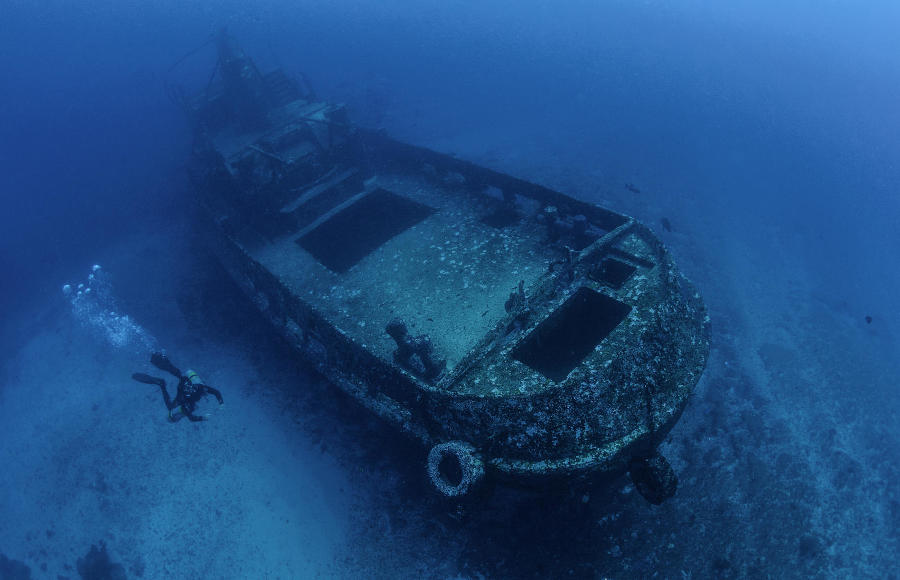
This is one of our most popular dive sites because of its variety of wildlife. Shark Point is suitable for all levels of divers who can have all their own diving experience without interfering with each other. Because of this the site can be split up into a few different areas that over time have been given different names. From the island it starts with a gently sloping down reef known as Andy’s reef. Up to about 10 metres depth this is the best place to spot our famous green turtles. These magnificent an peaceful creatures can grow up to about 1 metre in size. Sloping down to about 20 meters there are all kinds of coral rocks where all sorts of angelfish, puffer fish, butterfly and trumpetfish, parrotfish in all colour variations and triggerfish can be found. A few days before and after full moon it is also likely to come across a school of bumphead parrotfish which are feeding on the hard corals.
In the deep section the dive site lives up to its name. Here you are most likely to find whitetip and blacktip reef sharks. Between the ridges and valleys you will see them resting on the bottom but as soon as you come to close they will swim away. In this area there is an impressive variety of other marine life such as Trevally, barracuda, snapper and blue spotted stingrays. Especially when the currents are strong it is teeming with life and the dive then can be an adrenaline rush.
Taman Wall is our newest dive site. Afer a few years of speculations, and searching for it, it was eventually found by Philip Christoff and Lindsey Hull in 2019. Taman Wall actually consist of 4 divesites. Grey Wall, Lindas, Backyard, and Eagle corner. The Reef starts at 45m and goes well beyond 150m. Which makes it an ideal divesite for trimix dives, but also for 45-55m air dives. The dive sites generally have a bit more currents compared to our other deep sites, but that in turns means that we more frequently spot sharks on our dives.
On previous exploration dives of the site, we have encountered Thresher Shark, school of Hammerhead Sharks, Oceanic Blacktips, but more often we se Grey and White tip Reef sharks. Other than sharks the dive site is home to a large school of fusiliers, a large banded seasnake that comes to check you out almost every dive.
Tangga Wall is located in the Same area as Tunang and Rainbow reef. It is the last dive site in that area before the wall drops off to deep. Tangga reef starts around 45m and goes beyond 200m. Tangga is another dive site where a thick descent/ascent line has been put in place for deep trimix dives. It was put in place 2019 by Måns Olsson and Samuel Mason. The line currently starts at 45m and goes all the way down to 155m where it is tied off. Tangga has a very unique topography, and the freefall over the 45m and 105m ledge is a great experience.
Taking a right turn at the bottom will lead you into the Colosseum, where the wall curves before it goes into Tunang. The view from the bottom and up is spectacular as you can see the Wall surround you all the way to the top at 45m. Tangga is home to large Tunas passing by at about 85 m during the descent. The top of the wall is also filled with lots of different type of reef fish and the corals thrive in the slightly colder temperatures.